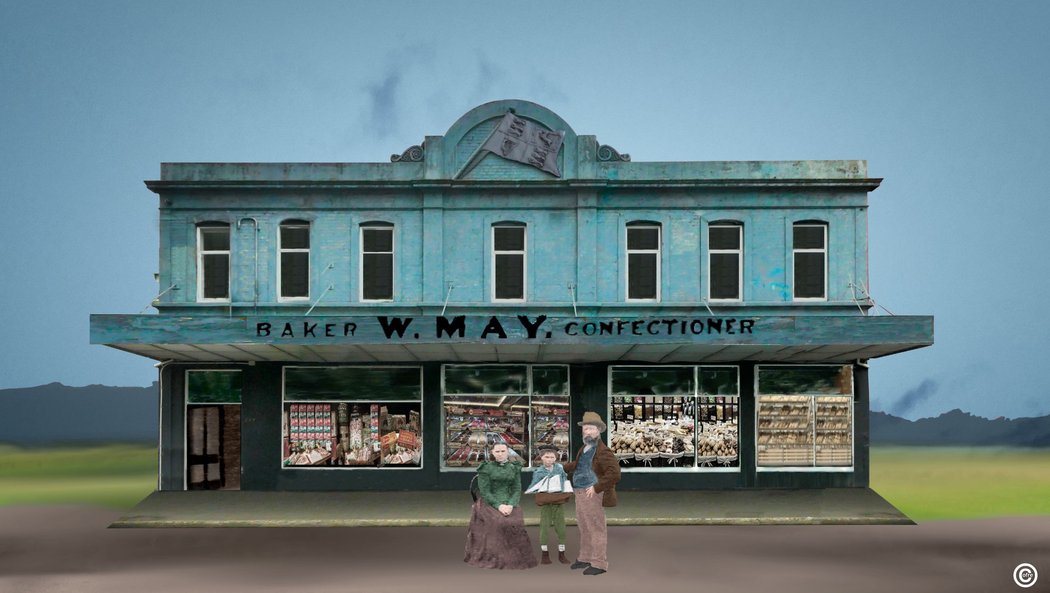
Dunedin, Nieuw Zeeland, maart 2020
Dit gebouw dateert uit het laatste jaar van de negentiende eeuw. Het heeft een bijzonder opvallend kenmerk: een sculptuur van de Koninklijke Standaard in reliëf op het fronton.
Harry May, van de banketbakkerij May & Co., bouwde het als fabriek in 1900. Helaas eindigde zijn onderneming in een tragedie. May kwam al snel in een financieel moeras terecht en gebruikte de namen van anderen om zijn rekeningen te bekrachtigen. Dat gebeurde in die mate dat hij later werd omschreven als een 'groothandelsvervalser'. Op 4 juni 1901 werd hij verdronken aangetroffen in de St. Clairbaden.
Hij liet een vrouw en drie kinderen achter.
Dunedin, New Zealand,
March 2020This building dates from the last year of the nineteenth century. It has one particularly striking feature: a sculpture of the Royal Standard in relief on its pediment.
Harry May, of the confectionery firm May & Co., erected it as a factory in 1900.
At the age of 30, Harry May had confectionery shops in both Rattray and Princes streets, as well as his new factory. Sadly, his enterprise ended in tragedy. May quickly found himself in a financial quagmire and used other men’s names to endorse his bills, to the extent that he was later described as a ‘wholesale forger’. On 4 June 1901 he was found drowned at the St Clair baths. He left a wife and three children.